Five Nights at Freddy's: Into the Pit Review - SpringTrapped!
- Lewis

- Oct 20, 2024
- 14 min read
Updated: Jul 10, 2025
Hello, gaming enthusiasts! I’m Lewis! Welcome to the XPN Network! Guess who’s behind you, standing by the door… Eyes glowing white, low hanging jaw… A heavy suit I carry in my hand, I hope that you’ll understand; as we have been so lonely here, waiting for a friend… You will stay until the end…
Wide-eyed, you’re screaming. What did we do wrong? Stay still, my friend. This won’t take long. Frail bones break under pressure, so we heard. Mind your head, this could hurt… Now that you live with us here, we can be good friends. Because you’ll stay until the end (my friend)
Thank you to MadMario, who gave Freddy’s theme a very different feel with those lyrics. For those who had no idea, Freddy’s theme is a music box version of the famous Toreador March, a piece from the opera Carmen by French composer Georges Bizet. A video for the original creation is below.
Hello, friends! I hope you enjoyed my little introduction, which included some background on the iconic tune known as Freddy’s theme from Five Nights at Freddy’s Universe. I’ve been a massive fan of the franchise since the original game launched on August 8, 2014. I owe much of my passion to the incredible Markiplier, an amazing YouTuber who introduced me to this chilling world.
FNaF, as its fans fondly call it, boasts one of the most intricate and captivating narratives in horror gaming. It pioneered a new subgenre known as Mascot Horror, blending childlike themes—like the animatronics in a whimsical pizzeria—with a chilling horror backdrop, including the tragic tale of five children who now haunt the characters: Freddy, Bonnie, Chica, Foxy, and Golden Freddy.
RELEASE DATE:
PC - 7TH OF AUGUST 2024 CONSOLE : 27TH OF SEPTEMBER 2024

Game Overview
Over the years, the FNaF universe has expanded significantly, with numerous games exploring various styles. One of the latest instalments, developed by Mega Cat Studios, takes a fresh approach, drawing inspiration from the Fazbear Frights novel series—specifically, the chilling tale Five Nights at Freddy’s: Into the Pit.
While the original game relied on point-and-click mechanics, today, I’m excited to unveil the newest entry in the franchise, featuring what might be the most terrifying version of Springtrap yet. So, without further ado, let’s dive Into the Pit!
Expectations & Context
The excitement surrounding Five Nights at Freddy’s: Into the Pit has been palpable, with fans buzzing about the game ever since its announcement. This title marks not just a continuation of the beloved franchise, but a bold new direction that draws inspiration from the Fazbear Frights novel series.

Rather than being a direct sequel or a remake of previous entries, it stands as a fresh addition to the FNaF universe, aiming to blend elements of horror and storytelling in innovative ways.
From the trailers, the game promised a return to the franchise’s roots while also introducing new mechanics and characters that could redefine the experience. The haunting visuals and eerie sound design rekindled my enthusiasm, reminding me of the tension and thrill that the original games delivered.
My past experiences with the franchise left me eager for more—each game has offered unique gameplay mechanics and narratives that pushed the boundaries of horror gaming. Given the rich lore and the franchise’s ability to surprise players, I went into the game looking for a good scare and wasn’t disappointed!
I was excited to see how the developers would weave together the chilling tales from the books with the interactive horror that fans have come to love.

The History of Five Nights at Freddy's
For anyone who knows me, it’s no secret how obsessed I am with mascot horror lore—Five Nights at Freddy’s is where it all began for me. So, before we plunge Into the Pit, let me break down what Five Nights at Freddy’s is for those who might not be familiar. So, Five Nights at Freddy’s owes its origins to an unlikely source: a family-friendly game called Chipper & Sons Lumber Co., created by Scott Cawthon.
While intended to be light-hearted, the game’s characters were criticized for being unintentionally creepy, with players pointing out that the protagonist—a beaver—looked disturbingly like a haunted animatronic. One reviewer even called the game “terrifying,” though that wasn’t Cawthon’s intent at all. Instead of seeing the criticism as a setback, Cawthon embraced it and set out to make a game that was meant to be truly scary. This decision gave birth to the Five Nights at Freddy’s we know today.

The series revolves around a psychological horror concept. Players take on the role of a night guard at Freddy Fazbear’s Pizzeria, a family restaurant similar to real-life Chuck E. Cheese, where large animatronic animals perform for kids during the day. However, things get far more sinister once night falls. These once-adorable mascots begin roaming the building with dark intentions, and your job as the night guard is to keep an eye on them through security cameras, doing everything you can to survive until morning. What seems like a simple task quickly spirals into a nerve-racking battle for survival as you discover that the animatronics are possessed by the vengeful spirits of murdered children.
What started as a seemingly simple horror game has since evolved into a franchise known for its deep, intricate lore and spine-chilling atmosphere. FNaF taps into a primal fear—childhood nostalgia turned nightmarish, where once-friendly characters become instruments of horror. It’s a universe full of mystery, where every game uncovers more about the tragic and haunting past of Freddy Fazbear’s Pizzeria.
The Plot of Into the Pit
The plot of Five Nights at Freddy’s: Into the Pit transports us to the future, where you step into the shoes of a new protagonist named Oswald. Life for Oswald in his small town is dull and uneventful, and after his father leaves him at a rundown, forgotten pizzeria, he decides to wander and explore—partly out of boredom and partly to punish his dad for leaving him behind. During his exploration, Oswald stumbles upon an old party room with a large, dusty ball pit, which seems like the perfect place to hide. But this is no ordinary ball pit.
Oswald soon discovers it’s a gateway to the past, transporting him back to the time when Freddy Fazbear’s Pizzeria was thriving. Through this unexpected time travel, Oswald finds himself thrust into a terrifying mission, where he must survive five adrenaline-pumping nights at the pizzeria. With Springtrap lurking in the shadows, Oswald must save not only his new friends and family but also himself, as Springtrap has plans that reach far beyond just the past. The stakes are high, and time itself becomes a battleground in this horrifying race for survival.

Welcome to the World of FNaF Into the Pit
The concept of transitioning between two timelines in Five Nights at Freddy’s: Into the Pit adds an intriguing layer to the game, making the setting feel dynamic and immersive. Being able to witness first-hand what happened at Fazbear’s Pizzeria from a more hands-on perspective is both chilling and captivating. The world-building in this game is truly impressive—every night you spend in the past adds depth to the lore, allowing you to unravel secrets and understand the darker events that unfolded at the infamous restaurant.
The environments are incredibly detailed, with the dilapidated remains of the pizzeria contrasting sharply against the eerie nostalgia of its heyday. From the dim lighting to the unsettling sound design, every detail heightens the sense of dread. Springtrap’s presence is particularly menacing in this version, and the way he stalks you keeps the tension high, making you feel as though the world around you is alive, but in the most horrifying way possible.

Gameplay
Into the Pit’s puzzles and hidden lore contribute to this sense of a living, breathing world, transforming the experience into something much more than a simple survival game. Each clue you uncover and every puzzle you solve feels like a piece of the larger story falling into place. It’s not just about staying alive—it’s about digging deeper into the sinister past of Fazbear’s Pizzeria. The mix of time travel and a deadly predator like Springtrap elevates the horror, pulling you into the universe as you navigate the twisted reality Oswald finds himself and gives us the scariest version of Springtrap we have ever seen.
This game breaks away from typical side-scrollers by incorporating point-and-click mechanics creatively and intensely. For example, when you find an object like a ladder, instead of simply storing it in an inventory, you actually have to carry it, which adds a unique layer of challenge. First, the sound of metal scraping as you move will alert Springtrap, who will come charging toward you the moment he hears it. Second, you need to figure out exactly where the ladder needs to be used—adding a strategic element to your movement and problem-solving.

Difficulty & Balance
The game offers several difficulty levels, but even on Medium, I found it to be quite a challenge. This difficulty actually enhanced the fear factor—every encounter with Springtrap felt tense and high-stakes. However, for those who prefer to focus more on the story than constantly fearing for their life, there’s an option to lower Springtrap’s AI, making the game less intense without sacrificing the narrative experience.
Is the game frustrating? Absolutely, there were moments where I found myself getting genuinely annoyed, especially after narrowly escaping only to fail again. But despite that, I couldn’t bring myself to put the game down. The compelling story kept pulling me back in, balancing the frustration with a narrative that was too good to walk away from.

One of the things I’ve always loved about the Five Nights at Freddy’s series is how each playthrough reveals something new. Whether it’s hidden mini-games that unlock more of the lore or secret endings that change the outcome, there’s always something fresh to discover. Into the Pit is no exception. There are secrets to uncover, alternate endings to achieve, and new difficulty levels that can be adjusted to fit your playstyle.
Variety and Replayability
If you’re more focused on the story, the Creepy difficulty is a great choice for a less intense, more narrative-driven experience. However, if you’re up for a challenge, there are three other difficulties to choose from: Frightening (Medium), Terrifying (Hard), and Nightmare (Insane). The game caters to a range of players depending on how you want to experience it, but no matter the difficulty, this is definitely a game I would return to again and again.
There’s also an option to ramp up the difficulty significantly. You can choose to remove certain hiding spots, eliminate places that create noise distractions, and even make the AI more aggressive and deadly. These tweaks make the game much more intense, forcing you to rely on quick thinking and strategy, as there’s less room for error.

Graphics & Visual Design
The art direction in Into the Pit takes a bold departure from the previous games, opting for a more pixelated, cartoonish style. This shift not only matches the visual tone of the Fazbear Frights novels but also perfectly complements the eerie atmosphere of the game. There’s something about this art style that makes the animatronics, especially Springtrap, look even more menacing. The stylised visuals give the characters a haunting, exaggerated quality that adds to the overall tension. It’s a fresh approach that breathes new life into the story, delivering the horror in a way that feels unique and unsettling.
In terms of overall quality, I have to say the game is visually impressive. The textures are perfectly suited to the 2-D side-scrolling style, creating a cohesive and polished look. Throughout my playthrough, I encountered no technical issues—everything ran smoothly with a steady frame rate, and there were no bugs that impacted the gameplay experience. Honestly, after playing it on PC, I’m even more excited to see how the console release shapes up!

Characters & Cinematic Moments
The character animations in Into the Pit are exceptional, especially during intense moments like when Oswald runs or hides. One of the most chilling animations happens when Springtrap breaks through a door—it’s absolutely nerve-wracking and sets off a mini-game where he actively searches for you. The tension during these sequences is palpable, and the animation perfectly captures the terror of the moment.
Then there are the smaller, yet equally unsettling cutscenes. One that gave me chills was when you open a door and see Springtrap standing there, waving at you, beckoning you to follow him. It’s a spine-tingling moment that screams one thing: Don’t follow! The way these animations are integrated into the gameplay truly heightens the fear factor, making the experience all the more immersive.

Sound & Music
One thing I’ve always emphasized about horror games is how crucial the music, atmosphere, and sound design are in shaping the experience. In Into the Pit, the sound design is crafted to make you feel constantly unsafe. Every sound has a purpose, whether it’s to help you or to bring you closer to danger. Noises like a blender or the sound of running can give away your location, making you a target. On the flip side, these sounds also play a role in how you navigate and survive.

Voice Acting
Then there’s the terrifying vocal work—Oswald’s screams when he’s being chased, or the chilling growls and heavy breathing from Springtrap as he hunts you down. The intensity ramps up when Springtrap lets out a scream after spotting you, sending a jolt of fear straight through you. Mega Cat Studios truly nailed the audio design, creating an atmosphere that keeps you more than just nervous—it keeps you on edge the entire time.
The only instance of voice acting in Into the Pit comes from the Phone Guy, who is none other than Scott Cawthon himself, the creator of the entire Five Nights at Freddy’s universe. While it’s a great nod to the series’ roots, this is the sole voice performance in the game. Instead, the game leans heavily on sound effects to build tension and atmosphere, using them to convey emotions and create suspense in place of dialogue.

Music & Score
Throughout the FNaF series, we’ve heard different renditions of iconic songs and music, but one of my favourites is featured in Into the Pit. It’s a retro-styled version of Freddy’s theme with a calming tone, and I loved it so much that it’s now part of my playlist. This version plays in the future restaurant, contrasting with the music in the past Freddy Fazbear’s Pizzeria, which has a much more sinister, eerie vibe. The way the music shifts dramatically changes the atmosphere, instantly pulling you into the mood of each setting. You can also explore more of the game’s musical pieces in the extras menu, which is definitely worth a listen!

User Experience & Accessibility
The UI in Into the Pit is quite minimal, focusing mainly on immersing you in the experience. The only constant element on-screen is a sound bar that indicates how much noise you’re making, which is crucial for avoiding Springtrap. Interactions are context-sensitive, with prompts appearing only when you’re near something you can interact with, keeping the HUD clean and unobtrusive.
Maps, inventory, and other options are tucked away in the pause menu, so they don’t clutter your screen during gameplay. This approach helps maintain the game’s atmosphere, but it also means you need to pause the game if you want to check your inventory or look at the map, which can break the flow during intense moments. Despite this, the overall UI is functional and straightforward, allowing you to focus on the tension and horror.

Accessibility Options
Into the Pit offers several accessibility options to cater to different player needs. These include adjustable font styles, the ability to change the frequency of hints (with the default set to every 10 minutes, but you can make them appear more often), and audio visualisation options to assist with sound cues. You can also customise the run mode, switching between hold or toggle, and there’s an option to remove the hiding mini-games entirely for a smoother experience. These features make the game more approachable and customisable for a wider range of players.
Load Times & Performance
Loading times in Into the Pit are relatively brief, ensuring that the pacing of the game remains smooth and uninterrupted. During my playthrough, I didn’t encounter any significant frame rate drops, and the game ran consistently well on PC. While I haven’t tested it across all platforms yet, the overall performance on PC was impressive, maintaining a steady frame rate even during high-intensity moments. I’d imagine the console versions should hold up similarly, but it’s worth noting that the PC seems to offer an optimized experience with no major technical hiccups.

Innovation & Comparisons
The standout new mechanic in Into the Pit has to be the time travel system that allows you to jump between two different periods. This hasn’t been done before in the FNaF universe, aside from showing glimpses of the future in DLC. The ability to switch between the present and the past, especially within the context of Freddy Fazbear’s Pizzeria, was an amazing addition that added depth to both the gameplay and the storytelling. It’s a fresh take that truly sets this game apart from its predecessors.
When compared to other games in the Five Nights at Freddy’s franchise, Into the Pit delivers a fresh and innovative experience, primarily through its time travel mechanic, which allows players to navigate between two distinct timelines. This contrasts sharply with the traditional, static settings of previous titles, where the gameplay revolved around managing limited resources and monitoring animatronics from a fixed vantage point.
Mechanically, Into the Pit represents a significant evolution in the series. It incorporates more interactive elements, such as physically carrying objects like ladders instead of storing them in an inventory. This adds a layer of tension, as players must be mindful of the noise they make while exploring.
When juxtaposed with the immersive VR experiences of games like Help Wanted and Help Wanted 2, which brought a new level of realism and interactivity to the franchise, Into the Pit retains the essence of survival horror but presents it in a 2D side-scrolling format. This approach not only enhances accessibility for a wider audience but also creates a unique atmosphere that complements its narrative.
Five Nights at Freddy's: Help Wanted
Five Nights at Freddy's: Help Wanted 2
While newer entries like Security Breach embraced open-world exploration and a more expansive gameplay style, Into the Pit feels like a return to the series’ roots, emphasizing fear and tension with fresh mechanics. Ultimately, it successfully blends nostalgic elements with innovative gameplay, making it a standout title that feels like a natural and exciting evolution within the FNaF universe.
Five Nights at Freddy's: Security Breach
Final Thoughts
Strengths
Into the Pit stands out for its unique take on the FNaF universe, blending time travel with survival horror. One of its greatest achievements is the ability to seamlessly transition between two distinct time periods, offering a fresh perspective on Freddy Fazbear’s Pizzeria. The game’s retro pixelated art style enhances the creepy atmosphere, giving the animatronics, especially Springtrap, a more menacing presence. Its sound design also shines, with every noise playing a crucial role in gameplay, keeping you constantly on edge.
The customisable difficulty options, from adjusting Springtrap’s AI to removing hiding spots, allow players to tailor the experience to their skill level. The minimal but effective UI and strong accessibility features, like adjustable hint rates and audio visualizations, make the game approachable for a wide audience. All these elements combine to create a highly immersive and tension-filled experience that fans of the franchise will appreciate.
Weaknesses
While Into the Pit excels in many areas, there are a few drawbacks that could be improved. The minimal UI, though immersive, might frustrate players who prefer more accessible maps or inventory management during gameplay. Additionally, the lack of frequent voice acting relies heavily on sound effects, which might leave some players wanting more dialogue-driven moments. However, these design choices ultimately serve the game’s atmosphere, and refining them could elevate the experience without detracting from its tension and immersion.
Personal Opinion
Now, the big question: “Did the game meet my expectations?” Honestly, yes—it absolutely did. Into the Pit scared me half to death, capturing everything I love about Five Nights at Freddy’s but with a fresh twist. Going into it, I wasn’t sure how I’d feel about the new approach, but I must say, it’s a game I wish I could go back in time and experience all over again. I never expected it to deliver the same level of fear as the original FNaF, Security Breach, or even Help Wanted, but my expectations were high, and they were met perfectly. I’m seriously considering buying the Five Nights at Freddy’s books. The way Into the Pit expands the lore has made me eager to dive deeper into the story and see what else the novels have to offer!
But here’s my question for you guys… Are you brave enough to enter Into the Pit?!

Thank you to everyone who took time out of their day to take a moment to read this review, your support is always appreciated and means the world to me!
So, from all of us and myself thank you! Oh, and guys before you go always remember to… KEEP GAMING!
XPN Rating: 5 out of 5 (Platinum)

Five Nights at Freddy's: Into the Pit is AVAILABLE now on
Interested in reading the Fazbear Frights Novels? Click the button below!
(Thank you to Scottgames and the team at Mega Cat Studios for providing the code for this review)
Be sure to check out Ash’s Video Review of Five Nights at Freddy’s: Into the Pit!






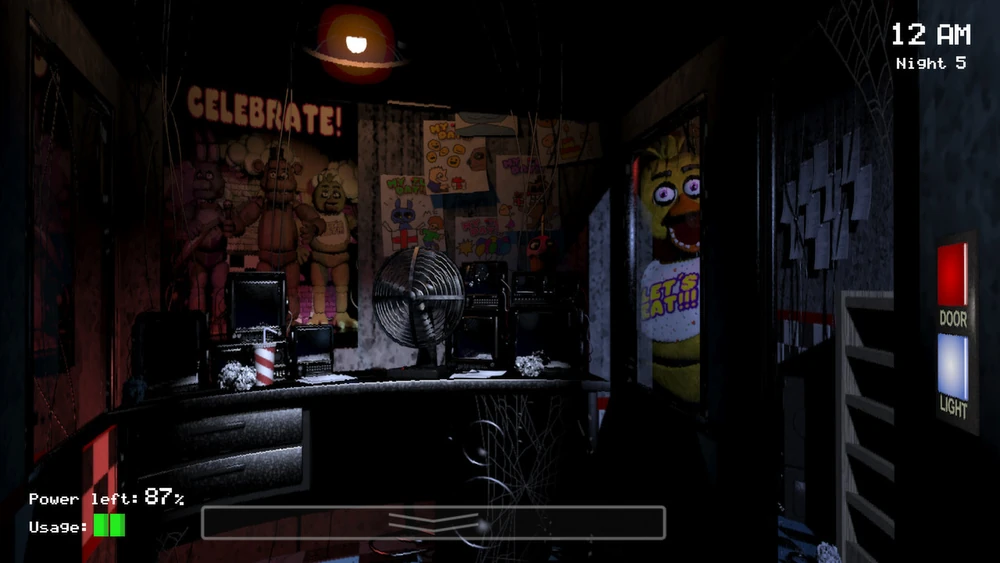
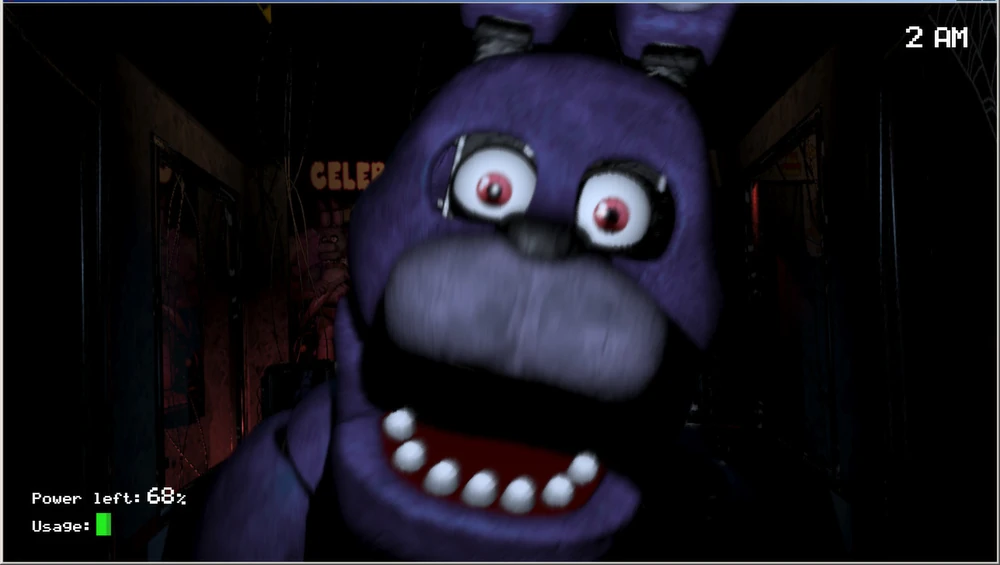


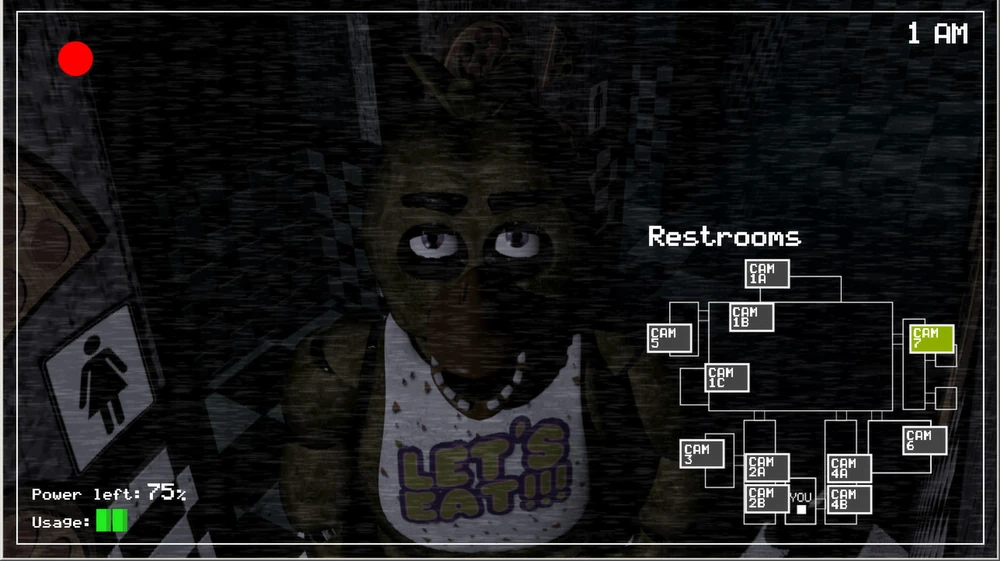







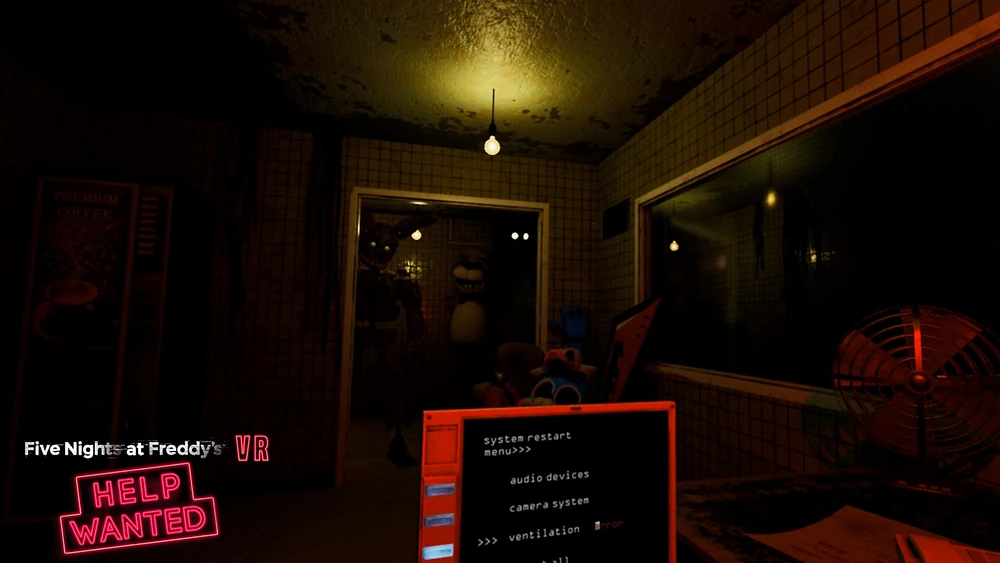













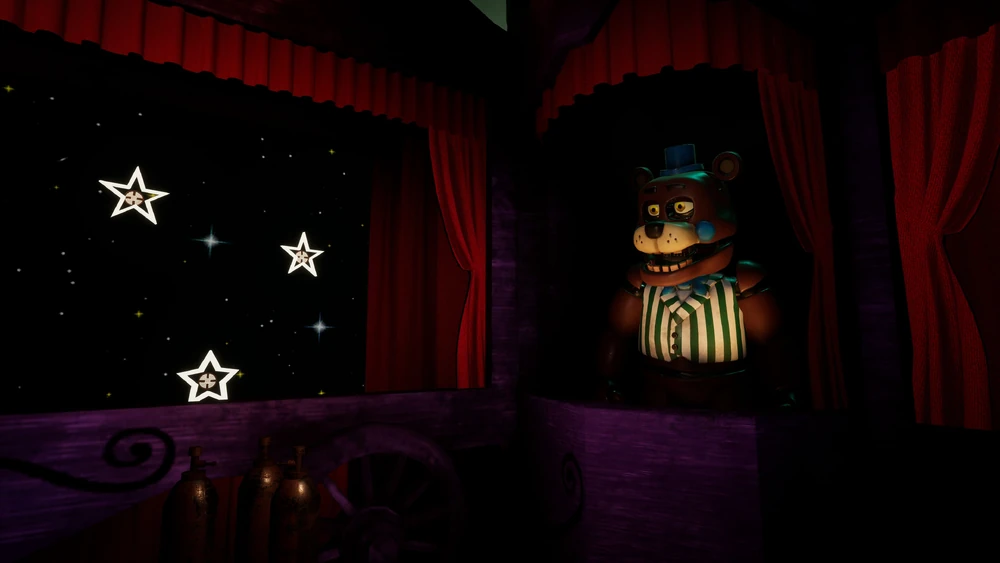



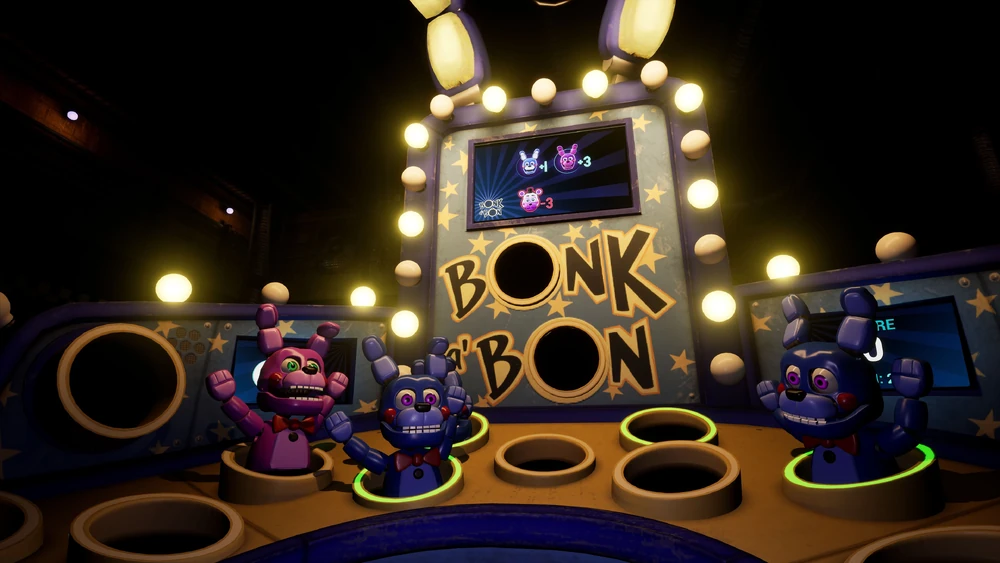
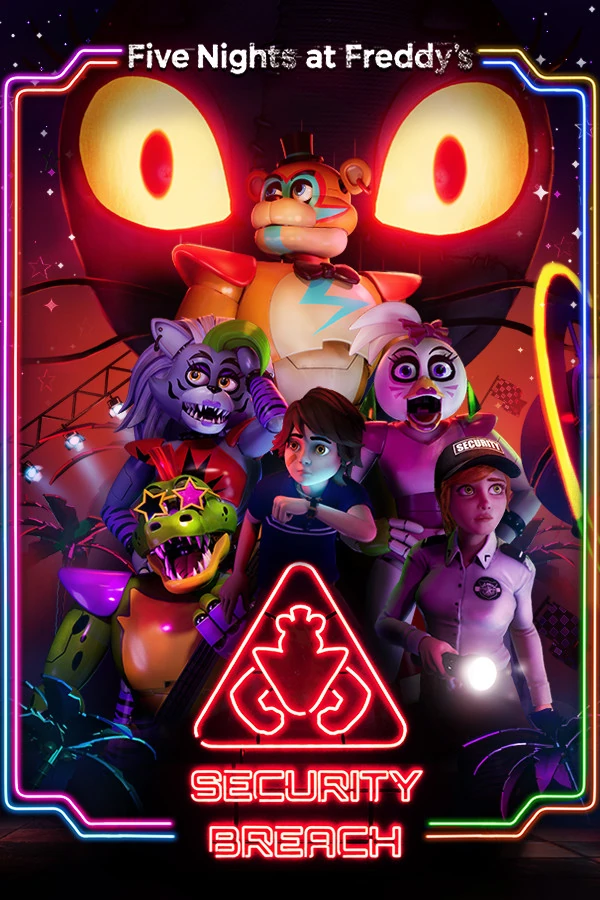














Loved the in-depth review for Into The Pit, you can feel the passion and extensive knowledge for the game in every paragraph. It was fun to watch you play, not sure I'm brave enough to face my fears quite yet (I screamed at the original game XD). However I enjoyed being able to experience it through you (whilst I semi-hid behind a pillow) Amazing writing Lewis
Amazing work! Looking forward to seeing what new stuff comes to this site!
This review was very insightful and interesting to read I thoroughly enjoyed it and will definitely be looking into purchasing both the series of games and books after reading this in-depth eye opening review